
How to play blues guitar. Blues lessons for beginners.
Contents

How to play blues guitar. Introductory information.
From a technical and compositional point of view, the blues is not something incredibly difficult, and anyone, even a novice guitarist, can play and compose their own blues part. However, this rather rich direction is definitely not worth bypassing. The main reason is that the blues now underlies absolutely any musical direction – from classic hard rock to extreme genres such as sludge or grindcore. “Blue Sorrow” is the forerunner of everything that is currently happening on the world music scene, and its basics, at least technical ones, are worth knowing, if only in order to understand how modern music works.
A bit of blues history

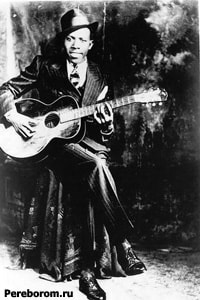
A rather interesting fact is that now the frets characteristic of the blues are heard not only in the music of the peoples of America, but also in Chinese folk music, as well as in the population of the far north of Russia.
See also: how to learn guitar notes
Blues lessons. The Six Essentials of Learning Style
Listen

- Robert Johnson – The complete recordings (1990)
- Muddy Waters – The Anthology (2000)
- Howlin’ Wolf — The Definitive Collection (2007)
- John Lee Hooker – The best of John Lee Hooker (1992)
- T-Bone Walker – Stormy Monday Blues: The Essential Collection (1998)
- Eric Bibb – The Good Stuff (1998)
- Bibi King – The Ultimate Collection (2005)
blues rhythm
In addition to the classic 4/4, the blues is based on a special rhythm called shuffle. Its whole essence lies in the fact that each beat of the bar is divided into three parts, and not into two, while every second beat has a pause.
That is it looks like this: one – pause -two – one – pause -two – and so on.
By playing the song at a high tempo, as well as listening to classic blues compositions, you will quickly understand the essence of this rhythmic pattern.
In order to work out knowledge in practice, below are eight guitar riffs in shuffle rhythm, which are standards, and therefore a support for composing future compositions.
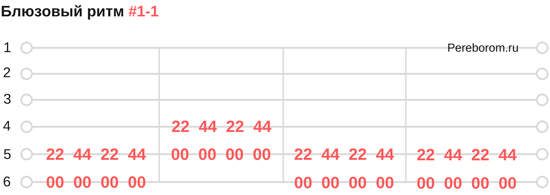
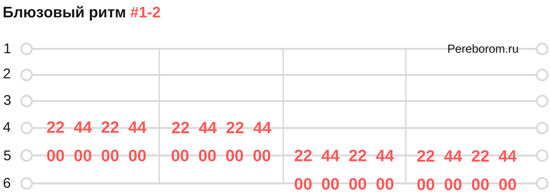
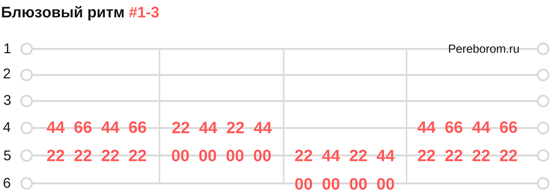
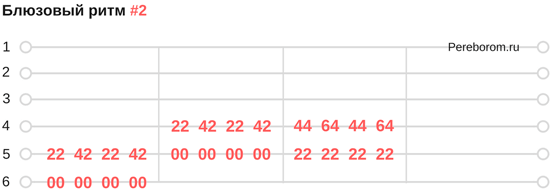
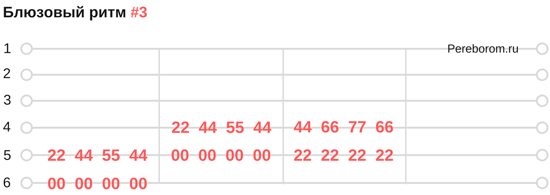
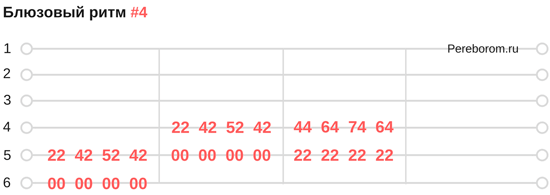
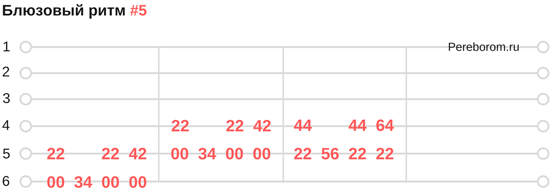
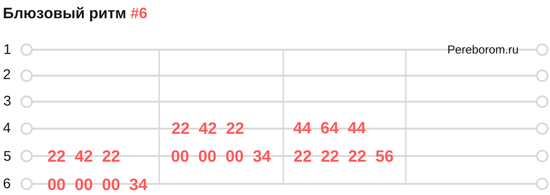
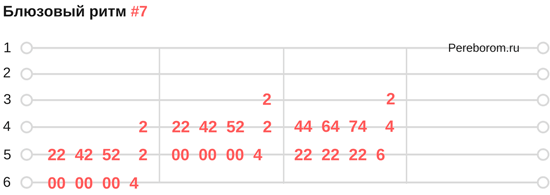
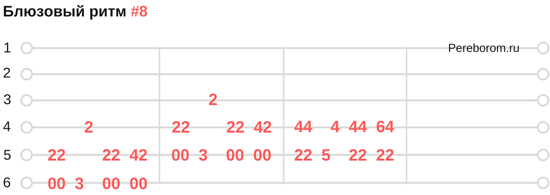
Blues chord progressions. Chord diagrams.

For example, the following harmony is very popular:
Hm – G – D – A
And all its derivatives, which are formed from different combinations of these chords. This sequence, for example, can be heard on the song Graveyard Train – Ballad for Belzebub, along with a blues solo and harmonica.
There is another, very simple sequence:
Em – G
It is on these two chords that Johnny Cash’s legendary masterpiece, Personal Jesus, is played.
Generally for thatto understand how blues harmony is built, you have to go a little deeper into musical theory. The whole genre is built on the sequence I – IV – V, that is, Tonic – Subdominant – Dominant. The tonic is the first note in any scale. Subdominant – respectively, the fourth, and the Dominant – the fifth.
That is, if we, say, take the key of E-major, then the chord progression will look like this:
E – A – H
Minus game training

Jam Track — 70 bpm
Jam Track — 100 bpm
Blues pentatonic scale
But this topic is incredibly important in blues for beginners. It is on it that the characteristic sound and melodies that you must own are built. Below are the five classic pentatonic scale boxes you need to learn in order to play the blues, both as chords and solos.
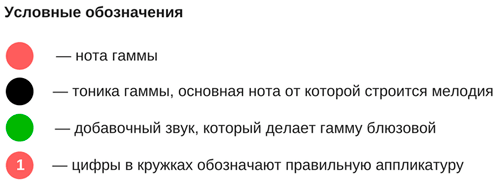
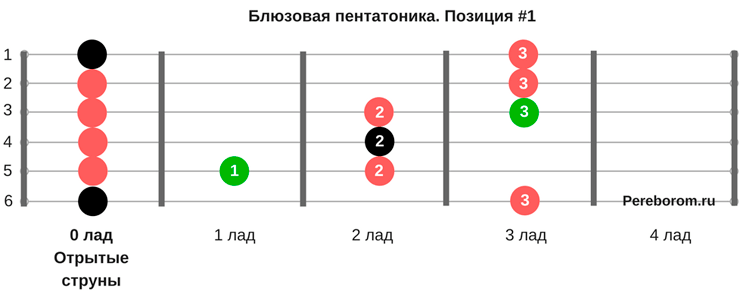
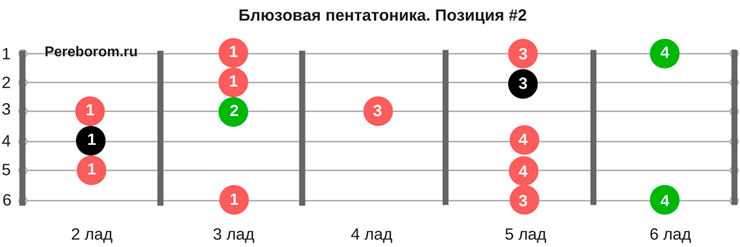

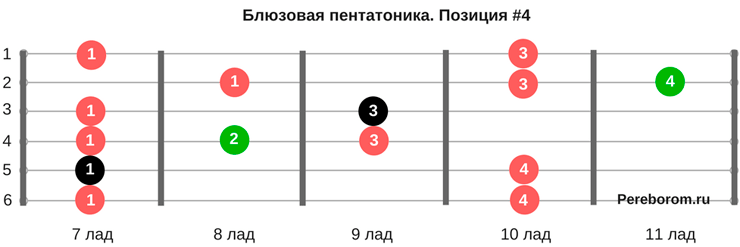
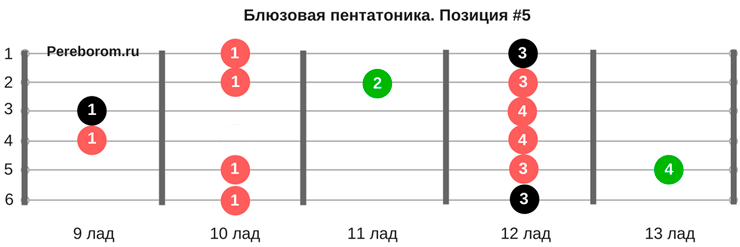
Game techniques
Of course, in this genre, various methods of playing the guitar are used. Some more often, some less often, but they all have a place to be.
- selected Its essence lies in the fact that during the sounding of the string on the fret, “swing” it a little, achieving a vibrating sound. This technique is used to emphasize an accent or an important note in the composition.
- Bend – this is a string pull. The bottom line is that with this movement, the tone of the note rises, and it changes to another. There are several types of bends, depending on how much you tighten the string. It is worth using this technique carefully, because not everywhere and not always it will sound out of place – for example, if a pulled note is not in the key, then a nasty knock-out sound will happen.
- Slide. This technique consists in hitting a note on one fret, and then, without releasing the strings, “move out” on the other. It is often used in blues and country, there is even a special thing – a slider, as well as a subspecies of guitars – slide guitars, the playing technique of which is built on this technique.
- Hammer-on and pull-off. The technique of these techniques is, in the first case, to hit the string with a plectrum, and then hit the adjacent fret with the finger of the left hand, while the string is still sounding. In the second case, the finger must be released, slightly picking up the fret. This is a very popular technique that allows you to play solo parts that are characteristic of the melody.
Analysis of other songs
There is no better practice for a guitarist than reviewing the songs of other artists. Be sure to do this when playing the blues, because a lot can be learned from such works – from single phrases to whole harmonic ideas and departure from the standards.
Phrasing work
Any blues tutorial will tell you that the main thing in this music is phrasing. Work on every break and phrase you put into your song. The classic version of building a solo part in the blues is a “question-answer”, that is, the first part should, as it were, ask a question, and the second should resolve it. However, due to the analysis of compositions, you can draw for yourself a huge layer of other variants of phrases that do not follow this concept.
Blues guitar tabs (GTP). Tablature of blues compositions and training exercises.
- Blues Shuffle Rhythm – Download (5 Kb)
- Eric Clapton – Layla (tabs for one guitar) – Download (39 Kb)
- Blues scale A-minor in 5 positions – Download (3 Kb)
- Fingerstyle exercise #1 – Download (3 Kb)
- 25 blues patterns – Download (5 Kb)
- Blues fingerstyle solo – Download (9 Kb)
- A simple and beautiful melody (A-minor) – Download (3 Kb)
- Just an exercise – Download (4 Kb)
Tips for Beginners
- Learn the basics of improvisation on the guitar.In the blues, this is especially important, since most of the compositions are based on this very improvisation.
- Learn songs from other artists.
- Study musical theory to better navigate the composition.
- Learn how to play the shuffle rhythm. This is the main rhythmic pattern, without it the blues simply does not exist.
- Keep track of the condition of your guitar. If you have the strings began to rattle,and this prevents you from playing solo parts, then be sure to take the guitar to the master so that he can fix the problem.
- Always play with a metronome.
- Learn blues standards for more improvisation.





